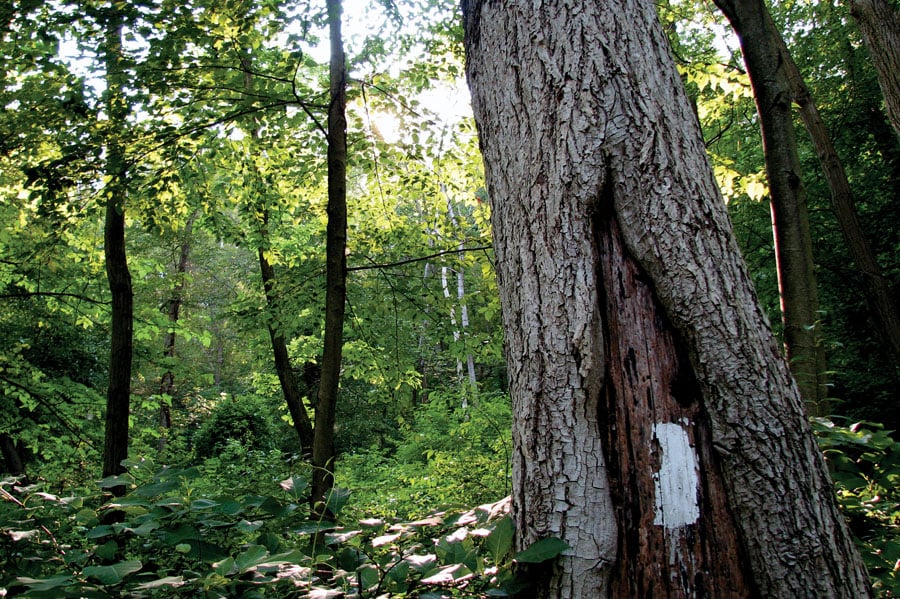When Earl Shaffer took his first steps along the Appalachian Trail, he wasn’t carrying a featherweight pack and a high-tech cooking stove. Heck, he wasn’t carrying a stove at all, or a sleeping mat, or even a tent for that matter. He had no cell phone, no moisture-wicking clothes, no knowledge of what lay ahead except that there were 2,000-some miles of it through 14 different states.
The year was 1948, and although it seems by today’s standards that Shaffer had a lot working against him, “Crazy One” successfully hiked the entire Appalachian Trail in 124 days. He was the first to ever do so.
In the nearly seven decades since Shaffer’s walk, more than 15,000 “2,000-Milers” have followed in his footsteps. But in those same seven decades, the hiking world, especially as it pertains to the A.T., has changed dramatically.
Seventeen-time A.T. thru-hiker Warren Doyle and the Appalachian Trail Conservancy’s (ATC) Southern Regional Director, Morgan Sommerville, have both maintained lifelong relationships with the A.T. They know what it’s like to stand on that precipice of change, shouldering external frame backpacks and gazing on as new generations of thru-hikers storm the trail with their smartphones and Gore-Tex.
They’re not bitter about it. They’re actually two of the A.T.’s most loyal devotees—Doyle leads group thru-hikes through the Appalachian Trail Institute (which averages a 75-80% success rate for aspiring hikers) and Sommerville has spent over two decades helping to preserve and promote the trail in his work with the ATC. With the help of these two trail advocates, we narrowed down the top 10 changes the trail has seen since the dawn of hiker trash.
#10 TRAIL ROUTE
Though the trail has grown over 100 miles in length since Shaffer’s hike, “it was harder on the knees” back then, according to Doyle. The trail, built in haste, took hikers straight up mountainsides instead of zigzagging through switchbacks as is the norm today.
#9 RESUPPLY FREQUENCY
As the A.T. and its community of thru-hikers developed, so too did the towns through which it ran. Well-stocked grocery stores replaced tired little convenience shops, and restaurants began catering to the yearly influx of dirty, hungry hikers.
“When I hiked in the ‘70s, we had long hikes in between resupplies, at least a week if not 10 days,” says Sommerville. “Now you can resupply every three or four days.”
#8 GIRL POWER
Female hikers of today certainly have big shoes to fill, what with Grandma Gatewood (who became the first woman to hike the trail solo in 1955 at the age of 67) setting the bar high in her Keds sneakers. Women now achieve at least a quarter of annual hiker completions.
#7 INTERNATIONAL FLAIR
Guatemala, India, Norway, Russia, South Korea, Wales, Australia, Canada, Germany. These are just a few of the countries that have recently been represented in the 2,000-miler community.
#6 INTENT TO HIKE
“It’s a thing to do,” says Doyle. “Back when I first started hiking, younger people were fueled by John Denver. We read John Muir, Edward Abbey, John Marshall. It was a much more literate population, and more spiritual. There are more hikers now that are into ‘things’ rather than ‘thoughts.’”
#5 WIFI ON MOUNTAINTOPS
Whether you agree with Doyle’s comment above or not, it’s impossible to deny the increased presence of cell phones and Kindles on the trail. But even if you can tweet from Springer, Doyle doesn’t think you should.
“Social media can tempt you, but it hasn’t diluted the wilderness experience. No one’s telling you to bring those technological devices.”
#4 GIARDIA
“It used to be called diarrhea,” Doyle says. “I don’t treat my water and I never will — it would be an insult to my body and a crime against Nature.”
Nowadays, Doyle’s in the minority, as nearly every hiker uses some form of treatment method, be it Iodine tablets or portable filtration devices.
#3 TRAIL ADVOCACY
The longstanding success of the A.T. didn’t come without a lot of blood, sweat, and chainsaws. Over 6,000 volunteers and 30 trail clubs help to maintain the A.T., and ATC-backed initiatives like Trail To Every Classroom and the Appalachian Trail Community program help foster a passion to preserve and promote the trail.
#2 ACCESS TO BETA
WhiteBlaze.Net, AppalachianTrials.com, Trail Journals, and Awol’s The A.T. Guide are just a few of the resources available to modern day thru-hikers that simply didn’t exist when Doyle and Sommerville hiked in the ‘70s.
“There weren’t any hiker services or hostels or anything like that because there just weren’t enough hikers to warrant them,” Doyle adds.
#1 OVERCROWDING
By 1970, only 69 completed thru-hikes had been recorded by the ATC. By the year 2000, more successful thru-hikes had been verified that year alone than in the previous 40 years combined. Now, it is estimated that upwards of 800 people will hike all 2,180 miles of the trail by the end of 2015.
While this growing number of annual thru-hikers is an exciting indicator that more people are getting outside, the increase in traffic also begets increased wear and tear on the A.T.—overcrowded shelters, trampled vegetation, trail litter. With the upcoming release of the film A Walk in the Woods, the ATC is being forced to reevaluate the trail’s future. Flip-flop hikes (which start from Harpers Ferry) and voluntary campsite registration are just two of the many ideas the ATC has conceived for mitigating impacts along the white blaze.
“It will be good for the trail and its environment but will also not restrict the traditional spontaneity that A.T. thru-hikers want to experience,” Sommerville says.
Unfortunately, as Sommerville knows, many potential hikers are seeking that traditional northbound walk. There’s no denying it, Sommerville admits: “It’ll be a tough road ahead.”
As for Doyle, who intends to thru-hike in 2017 and again in 2020 (at the ripe age of 70 years old), he’s not concerned about this issue of “overcrowding.”
“For me, I’d rather have people out there than crowded in shopping malls.”








